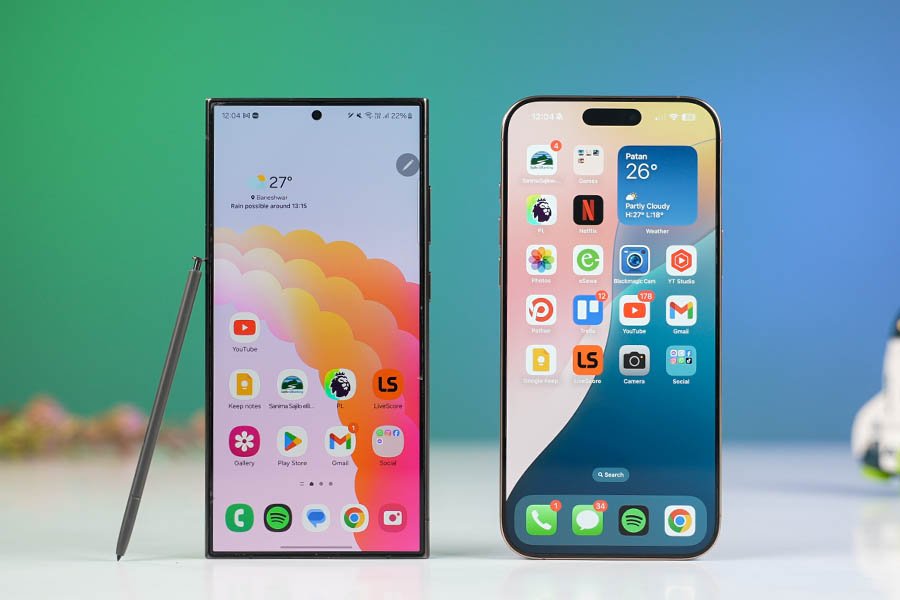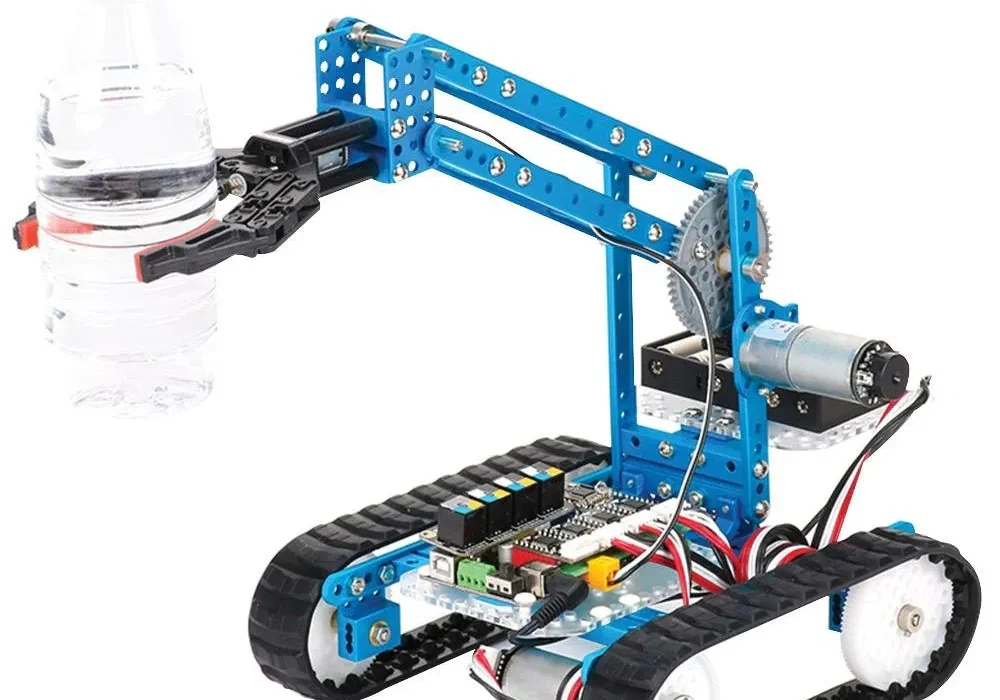It’s hard to remember how quiet the world was before the tiny rectangles in our pockets began to sing.
Before notifications buzzed like distant cicadas. Before the glow of glass screens cast ghostly light across our faces. Before love letters were typed out with thumbs. Before we carried a map of the world in a chip smaller than a fingernail.
Fifteen years ago, the smartphone was still a marvel. Ten years ago, it was a necessity. Today, it’s as natural as breath.
Yet if you close your eyes, you can almost feel time speeding up, as though the very electrons inside our devices are whispering secrets of what’s next. Technology rarely sits still. And ten years, in the realm of consumer electronics, might as well be a century.
So what will smartphones look like in ten years?
To answer this question, we must step into the future as if through a shimmering portal—and watch our glass rectangles metamorphose into something as dazzling and unrecognizable as a butterfly climbing free of its chrysalis.
From Solid to Liquid: The Shape of Things to Come
Picture holding your smartphone. Its familiar glass face cool against your skin. Its rectangle so precise, it seems cut from a single crystal. The icons glow, a patchwork of tiny light.
Now imagine bending it. Folding it in half like paper. Rolling it into a wristband. Stretching it across your forearm like a flexible display. Crumpling it, unfolding it, draping it across the dashboard of your car.
This is not science fiction. The seeds of this revolution are sprouting in research labs around the world, where materials scientists and engineers are crafting displays as supple as silk. OLED and microLED technologies have already made bendable screens possible, but the next ten years will bring even more radical advances.
Consider graphene, the miraculous carbon lattice so thin it’s practically two-dimensional, yet stronger than steel and more conductive than copper. Researchers are experimenting with graphene-based transistors and electrodes, potentially enabling displays that are not just flexible but transparent and virtually indestructible.
In the future, your smartphone may be a thin film you peel from a reel and adhere to any surface—a table, a window, your sleeve. It may be foldable to the size of a coin or unfurled to the size of a television screen. The “phone” as a rigid object may become a fluid thing, reshaping itself for every need.
Perhaps the very idea of “holding” a phone will seem quaint. Why carry a rigid block of glass when your whole environment can become your interface?
Invisible, Omnipresent: The Vanishing Device
Walk into a room ten years from now, and your phone might greet you before you even touch it. It might no longer be an object in your pocket but a cloud of invisible connections following you like a loyal shadow.
Today, the hardware is a tether. Tomorrow, the cloud may sever it.
Edge computing—the practice of running powerful AI models closer to the user instead of relying solely on distant servers—is rapidly evolving. Combine this with ultra-fast 6G wireless networks, and the smartphone’s brain could live mostly in the ether, leaving your physical device far simpler, or perhaps entirely gone.
A single, tiny wearable—an earpiece, a contact lens, a discreet pendant—could summon a virtual screen projected into the air, responding to eye movements, gestures, and voice commands. Or perhaps neural interfaces will make your thoughts the ultimate user input.
We see hints of this in devices like Meta’s Ray-Ban smart glasses, which can capture photos and answer simple questions. But these are primitive compared to what’s coming. The future phone may be less a “thing” and more a presence—a digital aura that envelops you, knowing who you are, what you want, and how to serve you.
The Dawn of Ambient Computing
Once, computing was a destination. You went to the office to use a computer. Then it became portable—a laptop, a phone. Now it’s becoming ambient: always present, everywhere.
In ten years, your smartphone won’t just be a separate device—it will be seamlessly woven into your surroundings. It may no longer dominate your attention but gently fade into the background, waiting to help when needed.
Your kitchen counter might recognize your fingerprint and display your calendar. Your car dashboard could morph into your personal digital assistant. Your bathroom mirror might show your heart rate and hydration levels while brushing your teeth.
This vision, known as ambient computing, means the smartphone’s core capabilities—communication, information access, entertainment, health tracking—become decentralized. They float invisibly through your environment, orchestrated by invisible AIs.
Google, Apple, and Amazon are already inching toward this reality. Voice assistants, smart home ecosystems, and wearable sensors are the early harbingers. But in ten years, we’ll move beyond isolated gadgets toward an all-seeing, all-knowing digital mesh.
The “phone” will be less an object and more an omnipresent layer, like the digital equivalent of air.
AI: Your Companion, Confidant, and Gatekeeper
Close your eyes and picture your phone talking to you. Not in robotic, tin-can tones but in a voice warm as a friend’s. Imagine it knows your habits, your moods, the subtle inflections in your speech. It offers gentle reminders when you’re stressed. It suggests calling your mother because it knows you’re lonely.
This is not simply a smarter Siri or Google Assistant. This is a digital entity with emotional intelligence.
AI language models have evolved rapidly in recent years, growing more fluent, empathetic, and context-aware. In ten years, the virtual assistant in your smartphone will not only answer questions but engage you in deep conversations, help you brainstorm ideas, soothe your anxieties, and act as a guardian of your mental health.
It will also serve as the gatekeeper to your digital life. It will filter spam, negotiate appointments, manage your finances, detect scams, and protect your privacy. It might even become your creative partner—helping you write, paint, compose music, or design digital worlds.
Yet this intimacy brings questions. How much should your phone know? Where do you draw the line between convenience and surveillance? The smartphone of 2035 will force us to negotiate a new social contract with machines.
Health: The Doctor in Your Pocket
Your smartphone already counts your steps and monitors your heart rate. But this is the dawn of a revolution.
Ten years from now, your phone may continuously scan your skin for signs of melanoma. It might analyze your voice for tremors indicating Parkinson’s disease. It could detect your blood sugar from a tiny sweat sensor or diagnose respiratory infections based on your breathing patterns.
Advances in non-invasive sensors, combined with powerful AI diagnostics, will transform the smartphone into a mobile medical laboratory. It will warn you of health risks long before symptoms arise. It might even manage chronic conditions, adjusting medication doses in real time.
For people in rural areas or countries with limited medical access, this could be lifesaving. Smartphones will democratize healthcare, bringing sophisticated diagnostics to billions who’ve never seen a doctor.
But privacy concerns will escalate. Your phone will hold your deepest secrets—genetic data, mental health records, intimate biological readings. Who will have access? Governments? Employers? Insurance companies? The ethical debates will rage as fiercely as the technological race.
New Realities: The Rise of XR
The rectangle in your pocket has long been a window—a tiny portal through which you glimpse the digital world. In ten years, that window may burst open into entire landscapes.
The coming decade belongs to XR—Extended Reality—a spectrum that includes Augmented Reality (AR), Virtual Reality (VR), and the blurry frontier between them. Already, tech giants are pouring billions into AR headsets, mixed-reality glasses, and immersive software platforms.
By 2035, your smartphone might project 3D holograms into thin air. You could sit across the table from a lifelike holographic friend on the other side of the planet. Your virtual workspace might spread across your living room walls. Your phone may scan your environment and overlay digital objects onto it, blending physical and virtual worlds into a seamless tapestry.
No longer will the smartphone be merely a tool—it will be a gateway into parallel universes.
Yet as these realities collide, we’ll face new social etiquette. Is it rude to check your holographic messages during dinner? Will people prefer virtual relationships to real ones? How do you draw boundaries between authentic and artificial?
The smartphone of 2035 will not merely connect you—it may redefine what it means to be human.
The Ethics of the Future Phone
Ten years from now, the smartphone’s powers will be godlike compared to today. But every technological marvel is a two-edged sword.
Your phone might save your life—or stalk you. It could bring you closer to loved ones—or deepen loneliness. It might empower democratic movements—or become a tool of surveillance states.
The more intimate our devices become, the higher the stakes. Data privacy will no longer be an abstract concept—it will be the front line of human freedom. In a world where your phone knows your biometrics, your DNA, your location, your desires, who controls that knowledge becomes the defining question of the age.
Technologists and ethicists alike warn of “surveillance capitalism”—a future in which corporations and governments exploit every pixel of your existence. But a countercurrent is rising. Regulators, activists, and privacy-minded companies are fighting to protect users.
The smartphone of the next decade may look ethereal and futuristic—but the moral battles around it will be deeply human.
A New Language of Touch, Sight, and Thought
The way we interact with our phones today—taps, swipes, pinches—might seem as quaint in 2035 as dial-up internet seems today.
Future smartphones will read gestures in mid-air, track eye movements, recognize subtle muscle twitches. Voice interfaces will be near-perfect, understanding not just words but emotions, sarcasm, and context.
But the most profound leap may come from neural interfaces. Tiny, non-invasive electrodes could read brain signals, translating thoughts into digital commands. Imagine texting someone just by thinking of their name. Imagine controlling a holographic presentation with your imagination alone.
Neuralink and similar companies are already exploring this frontier. Within ten years, rudimentary brain-computer interfaces could be commercially viable, opening pathways we can scarcely imagine.
But here, too, lurk ethical thorns. Do we want corporations to read our minds? Will our most private thoughts become hackable data?
The smartphone’s future lies not merely in screens but in the profound interface between flesh and silicon.
Beauty and Sustainability
There’s another dimension to the smartphone of 2035: how it looks, and how it treats the planet.
Today’s devices are marvels of industrial design, but they are ecological disasters. Rare earth mining, e-waste, and toxic materials leave scars on the Earth. Future phones must reconcile beauty with sustainability.
Expect devices made from biodegradable materials, recycled metals, and bio-plastics. Modular designs may let users replace components rather than discard entire phones. Batteries might be graphene-based, offering lightning-fast charging and longer life.
Sustainability will not be an afterthought—it will be a selling point. Consumers will demand it, and the planet will depend on it.
And then there’s sheer aesthetics. The phone of the future may not even look like a phone. It might shimmer like liquid metal, change color, glow with ambient light. It might become jewelry, fashion, an expression of identity.
Technology will become art.
A Human Story
Above all, the story of the smartphone’s next ten years is a human story.
We’ve lived with these devices long enough to know they’re not just tools. They are diaries, cameras, lovers, teachers, lifelines. They contain the archives of our memories, our dreams, our sorrows.
They have redefined how we love, how we grieve, how we protest, how we create. They’ve given voices to the voiceless, while sometimes drowning us in noise.
In ten years, they will be even more magical—and more dangerous.
Perhaps the ultimate question is not “What will smartphones look like?” but rather, “What will we become because of them?”
Will we be more connected or more alone? More informed or more manipulated? Will our machines serve us—or will we serve them?
The smartphone’s future glimmers on the horizon, a tapestry of dazzling possibility and deep uncertainty. But one thing seems certain: we will never again live in a world without the glow of our digital companions.
And when we finally cross into 2035 and look back, we may wonder how we ever lived without the magic that now rests invisibly all around us.






